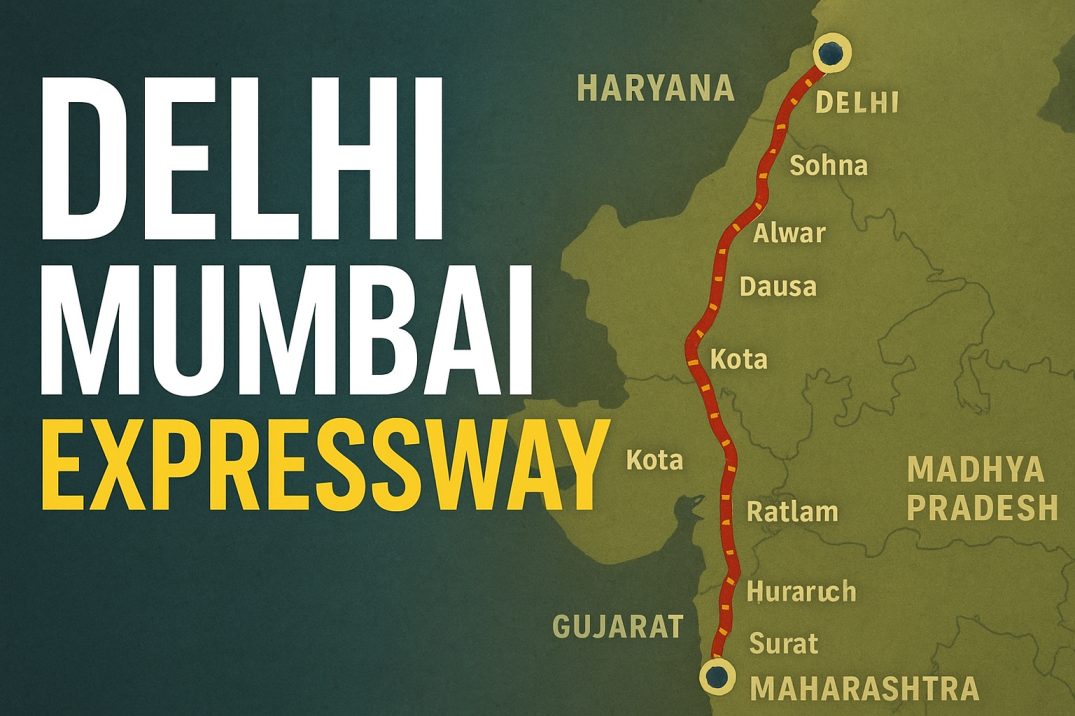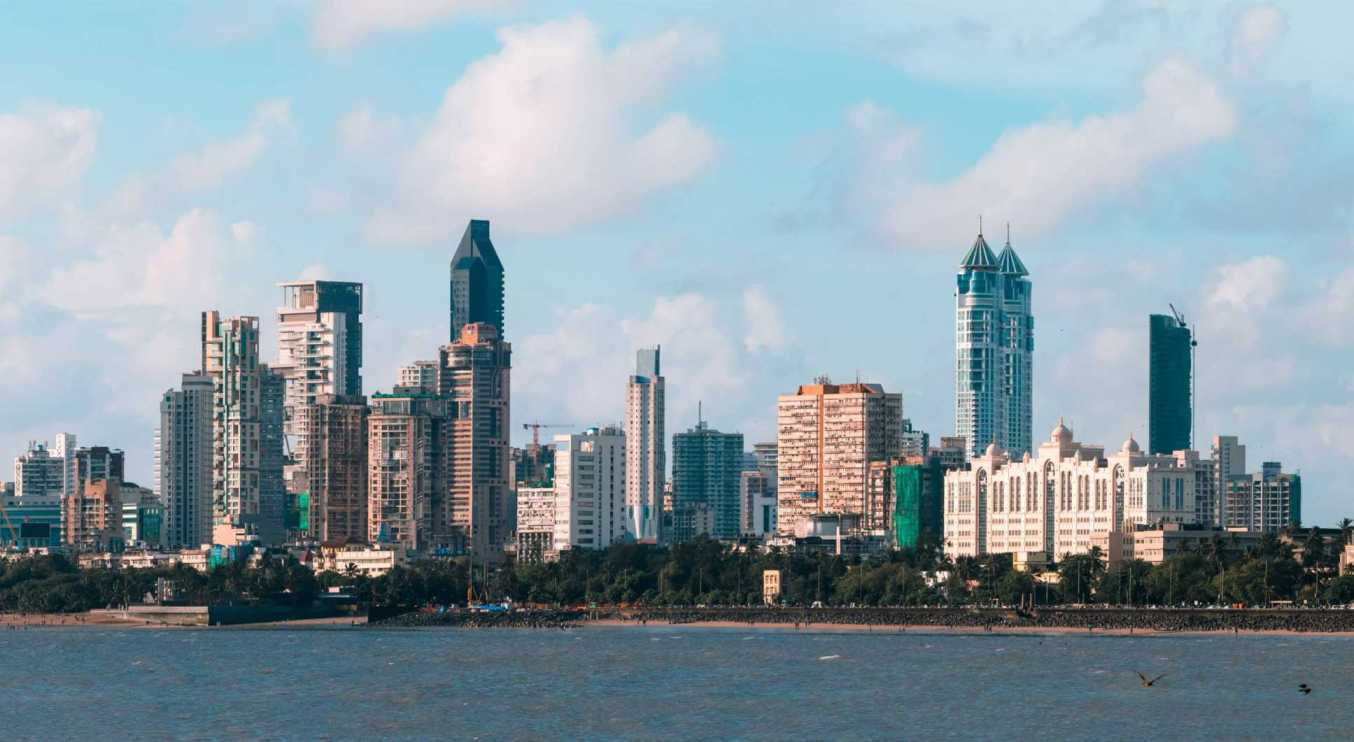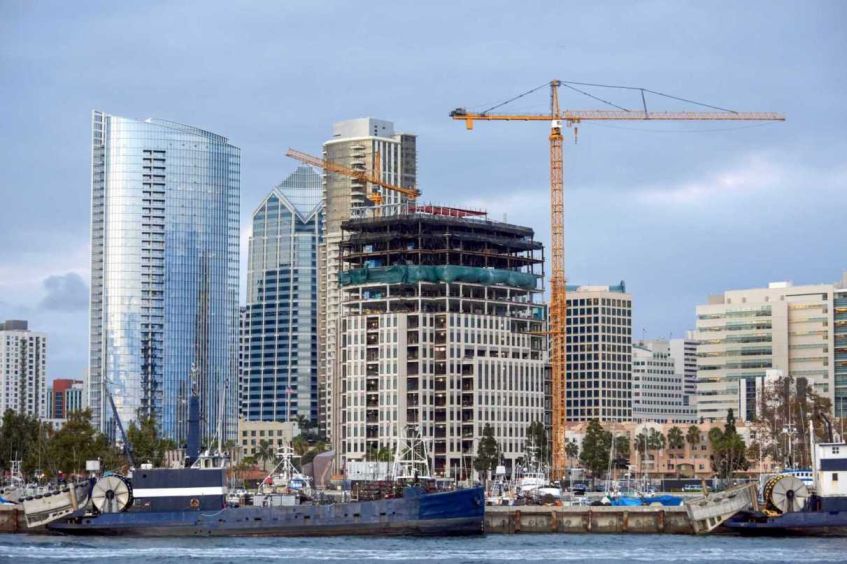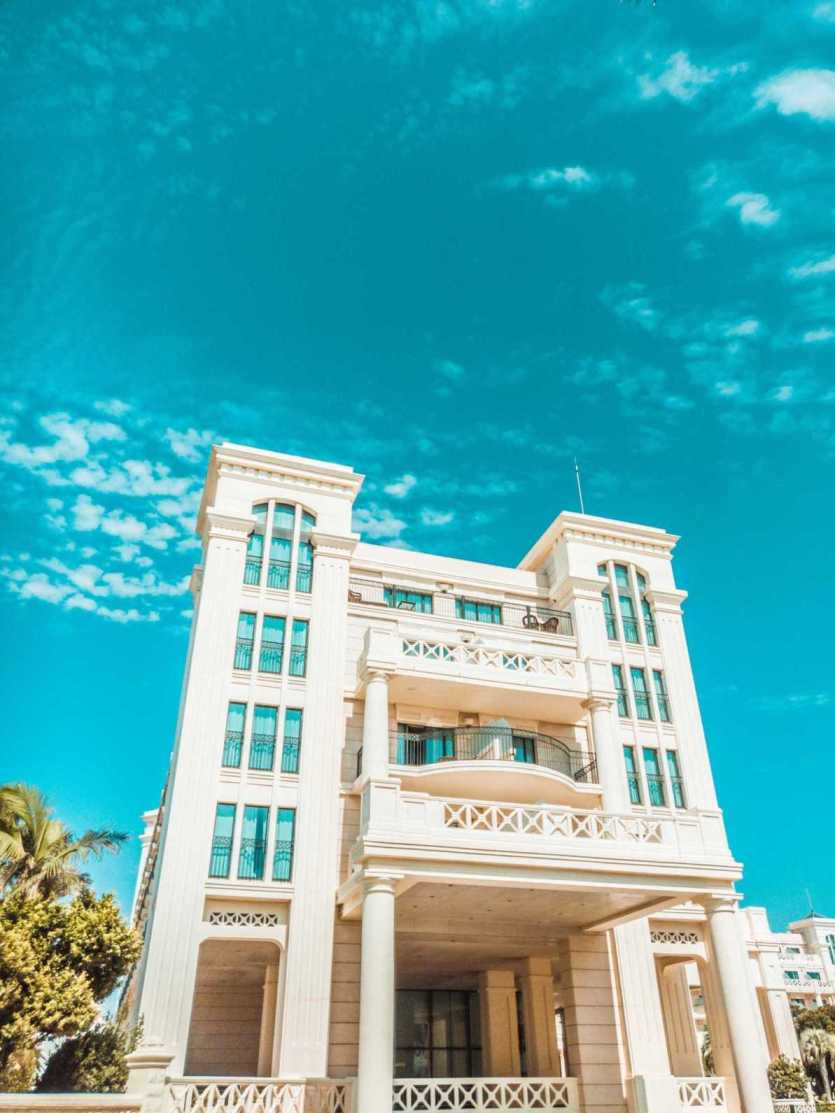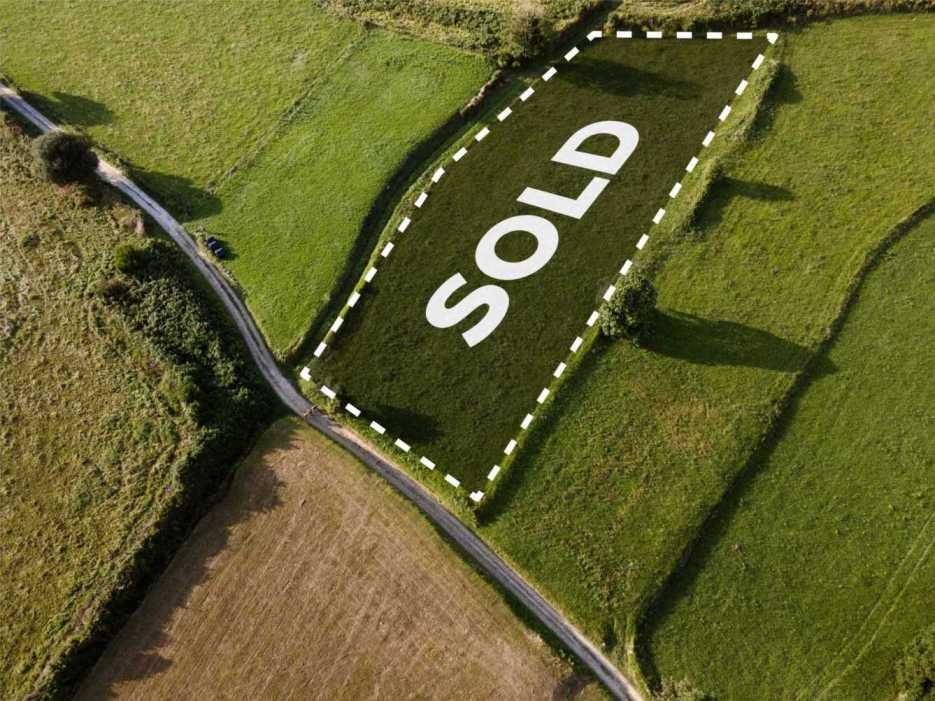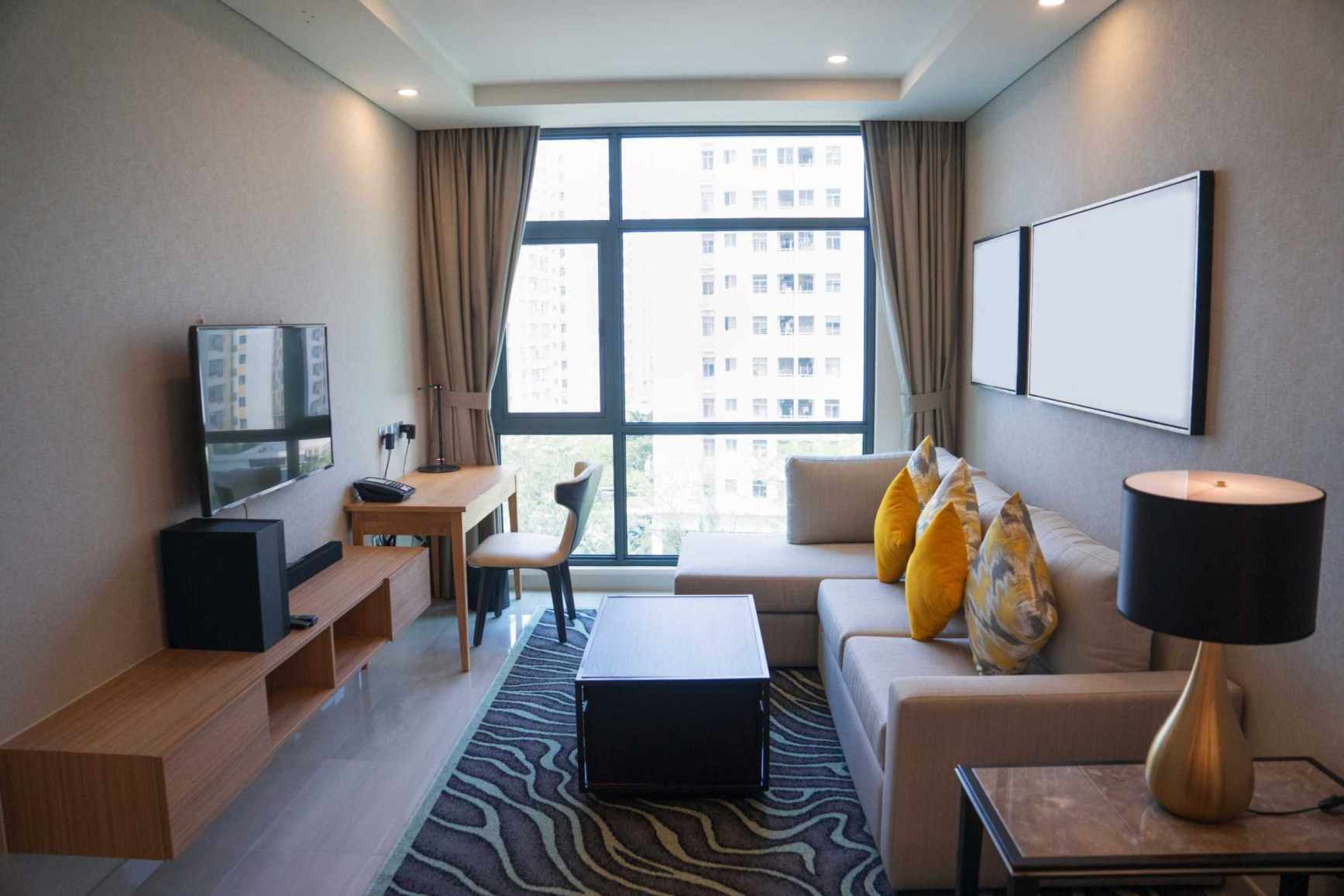
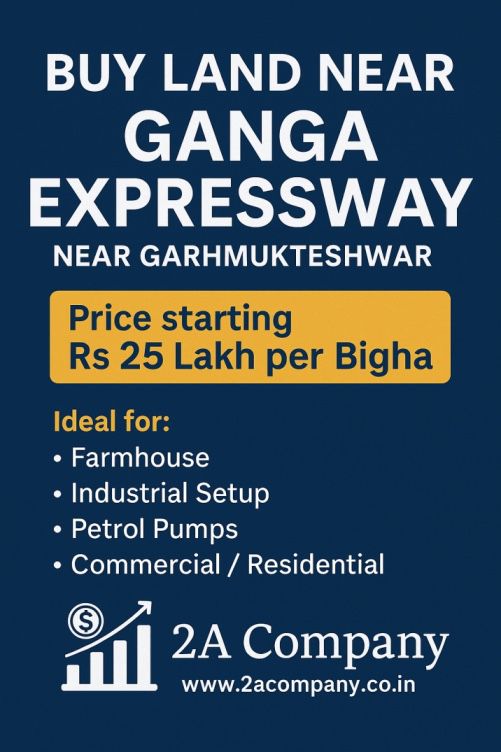
Upto 14-20% Returns Per Annum T/C* Applied*
Popup Title
This is a popup message.
- Delhi-Ncr Land
- Asset-Management
Delhi Mumbai Expressway Route, Map, & Latest Updates
India’s infrastructure growth story is incomplete without mentioning the Delhi Mumbai Expressway.
Touted as one of the longest expressways in the country, this ambitious project is transforming connectivity between the national capital and the country’s financial hub.
Commonly referred to as the Delhi Mumbai Highway, this corridor promises to cut travel time, boost trade, and open up new opportunities for real estate, industries, and logistics across several states.
In this detailed guide, we’ll explore the Delhi to Mumbai Highway route, map, and latest updates, along with how it connects with the Eastern Express Highway and other major corridors.
Read More: Plots In Jewar
Overview of the Delhi Mumbai Expressway
The Delhi Mumbai Expressway is an eight-lane, access-controlled expressway, with scope to expand to twelve lanes in the future.
Spanning nearly 1,386 km, this project is designed to drastically cut travel time between Delhi and Mumbai from 24 hours to just 12 hours.
Unlike the older Mumbai Highway routes that pass through congested areas, this new expressway provides a smooth, signal-free drive, enabling high-speed vehicular movement and seamless logistics operations.
States Covered in the Delhi to Mumbai Highway
The Delhi Mumbai Highway passes through six states, ensuring balanced infrastructure growth across multiple regions. These states include:
1. Delhi – starting point of the corridor.
2. Haryana – major industrial hubs like Sohna, Palwal, and Gurugram benefit.
3. Rajasthan – includes Alwar, Dausa, Kota, and Jaipur belt.
4. Madhya Pradesh – stretches through tribal regions and central India.
5. Gujarat – Vadodara, Bharuch, and Surat are major points.
6. Maharashtra – connects to Mumbai via the Eastern Express Highway.
This widespread coverage ensures that cities and towns along the Delhi Mumbai Expressway will see a surge in demand for residential, commercial, and industrial land.
Delhi Mumbai Expressway Route Map
The Delhi to Mumbai Highway route map reveals how strategically the corridor is designed to bypass crowded cities while still ensuring accessibility to major industrial and trade centers.
Key highlights of the route map include:
1. Delhi to Sohna (Haryana): Seamless access for NCR travelers.
2. Sohna to Dausa (Rajasthan): Major stretch for cargo and passenger movement.
3. Jaipur to Kota: Strengthening central Rajasthan connectivity.
4. Kota to Ratlam (MP): First time large parts of MP will have direct expressway access.
5. Vadodara to Surat (Gujarat): Boost for diamond, textile, and port industries.
6. Surat to Mumbai: Ends at Mumbai via the Eastern Express Highway.
This alignment ensures reduced traffic on the traditional Mumbai Highway, while creating new economic hubs.
Importance of the Eastern Express Highway Connection
The Eastern Express Highway in Mumbai plays a crucial role as it integrates the new expressway into the city’s existing road network.
1. Vehicles entering Mumbai via the Delhi Mumbai Expressway will directly merge onto the Eastern Express Highway, allowing quick access to central and south Mumbai.
2. This link will significantly ease congestion on older Delhi to Mumbai Highway routes, especially for cargo trucks headed towards Mumbai port.
3. With the expansion of business corridors, this integration makes the Delhi Mumbai Highway a backbone for India’s trade logistics.
Key Benefits of the Delhi Mumbai Expressway
a) Reduced Travel Time
The Delhi to Mumbai Highway cuts travel time to just 12 hours for passenger cars and freight trucks, boosting efficiency.
b) Industrial & Real Estate Growth
Cities along the Delhi Mumbai Expressway such as Gurugram, Alwar, Vadodara, and Surat will witness massive real estate appreciation. Developers are already eyeing land parcels along the new Mumbai Highway.
c) Boost to Tourism & Hospitality
Easier road travel will encourage tourism in Rajasthan, Gujarat, and Maharashtra. The Delhi Mumbai Highway opens access to unexplored regions.
d) Environmental Benefits
This expressway is also India’s greenest highway project with provisions for solar-powered lighting, rainwater harvesting, and wildlife crossings.
Delhi Mumbai Expressway Latest Updates (2025)
The progress on the Delhi Mumbai Highway is impressive, with several sections already operational. As of 2025:
1. Delhi–Dausa section (247 km) is open to the public, reducing Delhi-Jaipur travel time to under 3 hours.
2. Vadodara–Ankleshwar stretch in Gujarat is nearly complete, boosting connectivity to ports.
3. Advanced work is underway in Madhya Pradesh, particularly Ratlam and Dahod.
Integration with the Eastern Express Highway in Mumbai is in final stages, expected to streamline entry into the city by mid-2025.
With completion targeted for 2025–26, the Delhi to Mumbai Highway is already reshaping travel and trade in India.
Impact on Real Estate & Investment
The Delhi Mumbai Expressway is more than just a road—it is a catalyst for growth.
1. Industrial Corridors: Multiple industrial hubs are coming up in Haryana, Rajasthan, and Gujarat, attracting both domestic and foreign investors.
2. Residential & Commercial Land: Land along the Delhi Mumbai Highway corridor is becoming a hot favorite among developers.
3. Warehousing & Logistics: Reduced travel time encourages new logistics parks, especially near ports and metro cities.
Even the Eastern Express Highway stretch in Mumbai is seeing a rise in demand for commercial properties due to this new linkage.
Comparison with Traditional Mumbai Highway Routes
The older Mumbai Highway routes often involved traffic congestion, delays, and longer travel hours. In contrast, the Delhi Mumbai Expressway offers:
1. Access-controlled, signal-free drive.
2. Dedicated lanes for high-speed travel.
3. Shorter route by nearly 130 km compared to older paths.
4. Better integration with the Eastern Express Highway.
For businesses and frequent travelers, the choice is clear—the Delhi to Mumbai Highway is the future.
Delhi Mumbai Expressway and India’s Economic Growth
The Delhi Mumbai Expressway is part of India’s larger plan to modernize its infrastructure under the Bharatmala Pariyojana. This corridor is expected to:
1. Contribute significantly to GDP growth.
2. Create jobs across construction, logistics, and real estate.
3. Ease movement of goods from ports in Gujarat and Maharashtra to northern India.
4. Reduce logistics costs by nearly 8–10%.
By linking Delhi directly to Mumbai through the Delhi Mumbai Highway, and extending connections to the Eastern Express Highway, India is bridging gaps between its financial and political capitals.
Conclusion
The Delhi Mumbai Expressway is set to redefine road travel and infrastructure in India.
By merging with the Eastern Express Highway in Mumbai, this project ensures faster, smoother, and greener connectivity.
For businesses, real estate investors, logistics players, and everyday commuters, the Delhi to Mumbai Highway offers immense benefits.
Whether it’s shorter travel time, lower logistics costs, or booming property markets along the Mumbai Highway, this expressway is a game changer.
As the project nears full completion in 2025, one thing is certain—the Delhi Mumbai Expressway is not just a highway, it’s a pathway to India’s future.
Read More: Industrial land in delhi-ncr
